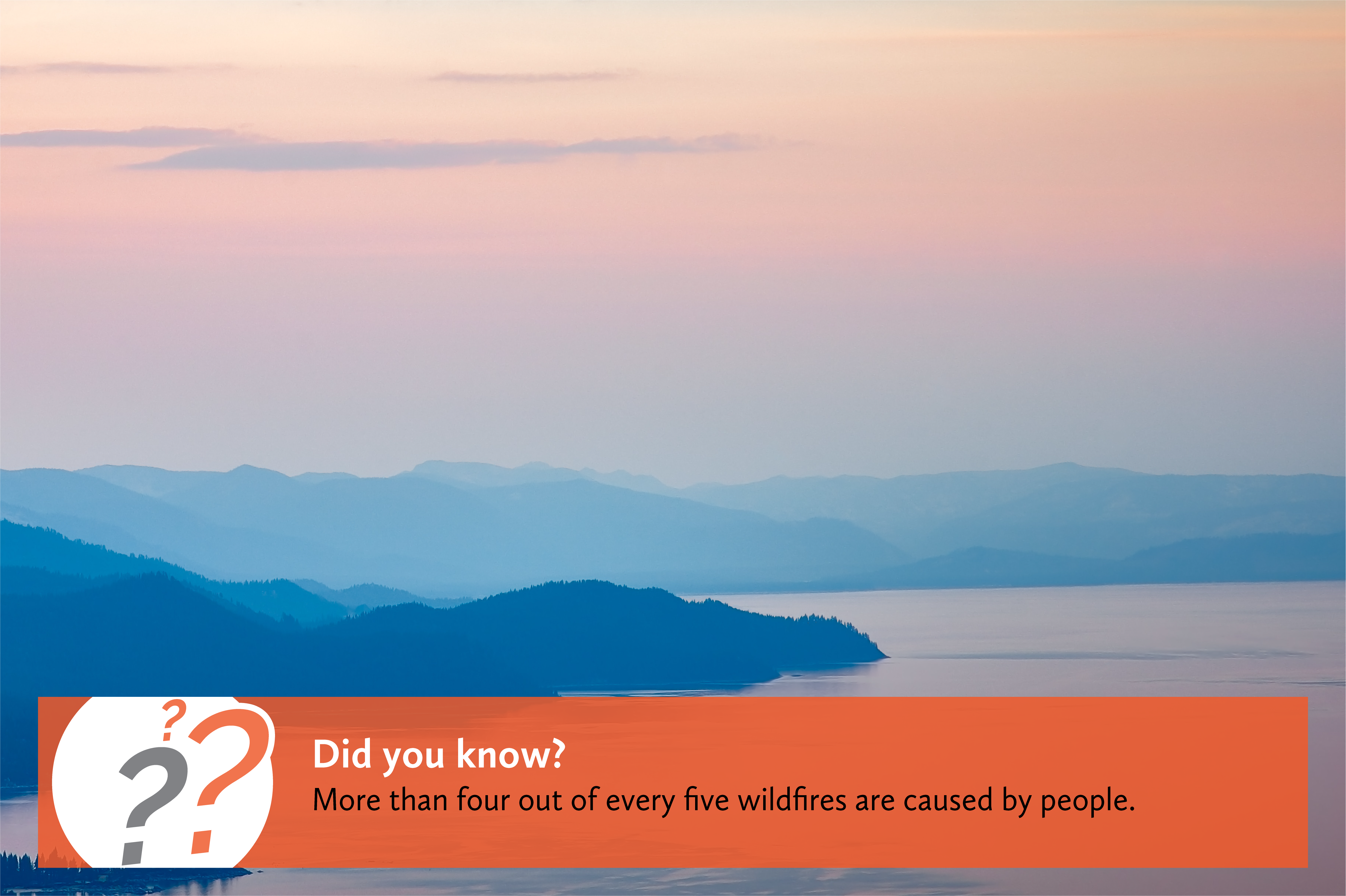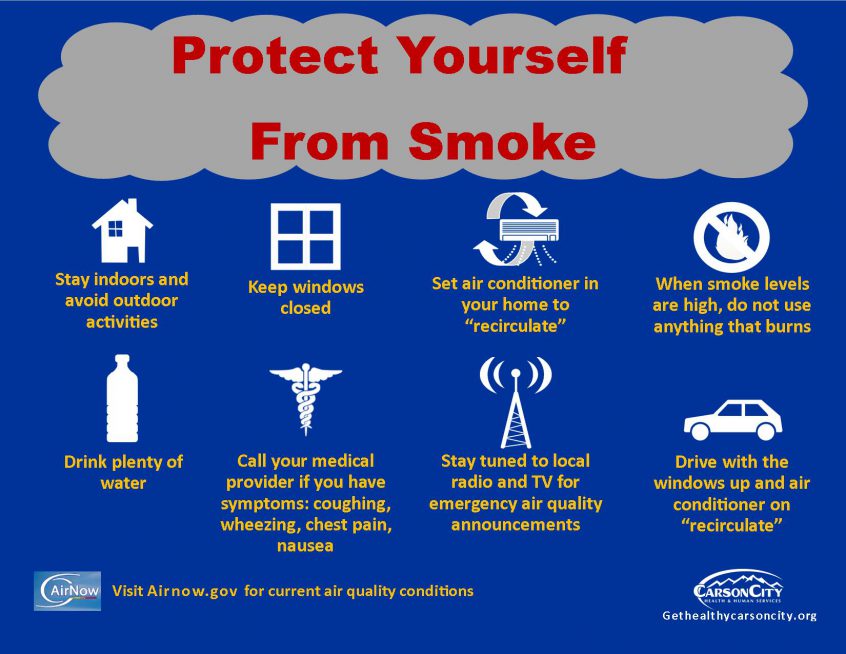Day 1: Wildfires & Smoke - Air Quality Awareness Week 2020

(This blog is one part of a series about air quality and your health. We encourage you to check the Air Quality Index (AQI) to decide when it’s best to be active outdoors.)
Does the lake above look familiar?
It’s Lake Tahoe enveloped in a plume of smoke from a nearby wildfire. When smoke blocks out the deep blue of the Sierra Nevada sky, Tahoe’s famed emerald waters are left looking dull and grey. Pretty bad, huh?
It seems like Nevada experiences more and more smoke from wildfires every year. Whether you live near Tahoe, in Las Vegas, along the I-80 corridor, or elsewhere in Nevada, you’ve probably experienced poor air quality from wildfires. Keep reading to learn what you can do to protect yourself, your family, and your pets from wildfire smoke.
What is wildfire smoke?
Wildfire smoke is a mixture of gases and small particles from burning trees and plants. The AQI can show the presence of wildfire smoke using measurements of particle pollution and ozone.
How does wildfire smoke affect my health?
It can hurt your eyes, irritate your respiratory system, and make chronic heart and lung disease worse.
Who is affected by wildfire smoke?
People with heart or lung disease, older adults, and young children are most affected. But when it’s bad, everyone is affected. Wildfire smoke can also exacerbate the impact of respiratory infections like COVID-19, by possibly making even harder to breathe. For this reason, and to reduce the risk of wildfires and protect first responders, the Nevada Division of Forestry has issued early statewide fire restrictions.
What can I do to protect myself when the air quality in my community is unhealthy?
Shorten outdoor activities
Take breaks
Check the EPA’s website for more tips

Learn more:
Wildfire smoke and your health: Do you need to worry?
Centers for Disease Control and Prevention – Wildfire Smoke
Protect Yourself from Wildfire Smoke
Protect Your Pets from wildfire smoke
